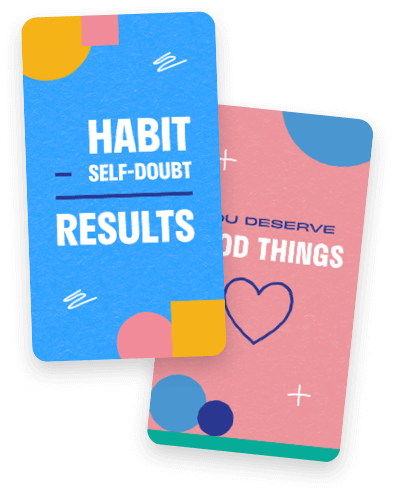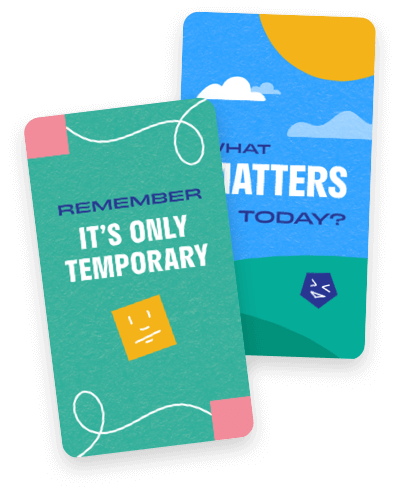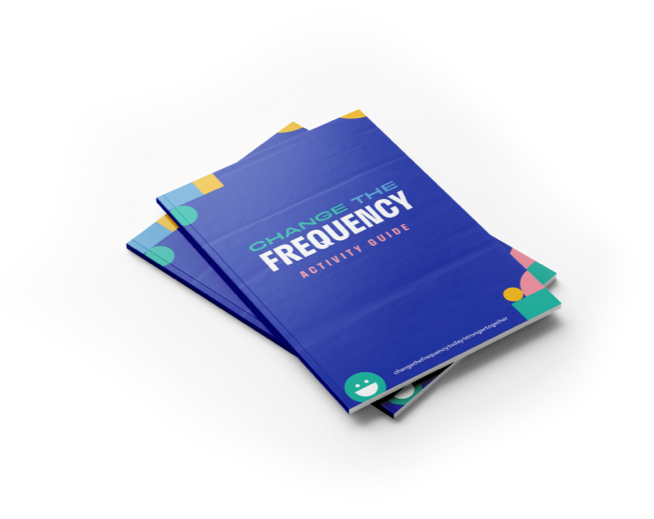
The energy is ours—we’ve got this.
Change the Frequency is a rallying cry—a commitment and collective challenge for us all to normalize the conversation—so we have the power, opportunity, and means to make a difference.

Speak Up
Your voice matters.
Yes, yours! And by speaking up and prioritizing our mental wellbeing—we become more aware of how our mental health impacts other parts of our life. We can reduce violence, improve relationships, and become more resilient when challenging moments arrive.






Yep, that’s right!
Its rhythmic and repetitive attributes engage the neocortex of our brain, the part that helps calm us down, and reduces our urge to be impulsive. Studies have also found that music helps lower blood pressure and heart rate and can even reverse how our body responds to stress. *
*National Alliance on Mental Illness
Actually, it can!
Its rhythmic and repetitive attributes engage the neocortex of our brain, the part that helps calm us down, and reduces our urge to be impulsive. Studies have also found that music helps lower blood pressure and heart rate and can even reverse how our body responds to stress. *
*National Alliance on Mental Illness



Sound Check
Ready to Change the
Frequency?
We often use music to match our mood—and while that can be beneficial—it can also keep us stuck in a not-so-great headspace. Music therapists use songs to help people alter their mood by slowly shifting to more upbeat songs. Check out these uniquely curated playlists designed to match or boost your mood!


Chillin’


Need a Boost


Feelin’ It
The request line is open! Share a tune that helps turn your day around and visit our Spotify account to listen to a playlist curated by YOU!




6 Hours
Close call!
Sleep experts recommend teens get at least eight hours of sleep each night – but most only get about 6.5 hours. Studies show sleep deprivation makes it harder to concentrate, impacting the way we think, react, and control emotions. Creating a nighttime routine helps regulate sleep patterns. To ensure you get those eight crucial hours of sleep, start by aiming for the same bedtime every night and limiting your evening phone use.
8 Hours
Right on!
Sleep experts recommend teens get at least eight hours of sleep each night – but most only get about 6.5 hours. Studies show that up to eight hours of sleep can help you concentrate throughout the day, positively impacting the way we think, react, and control emotions. Creating a nighttime routine helps regulate sleep patterns. To ensure you get those eight crucial hours of sleep, start by aiming for the same bedtime every night and limiting your evening phone use.
10 Hours
Not Quite!
Sleep experts recommend teens get at least eight hours of sleep each night – but most only get about 6.5 hours. Sleeping in too much can have negative effects on your health—increasing your risk for weight struggles and heart problems. Creating a nighttime routine helps regulate sleep patterns. To ensure you get those eight crucial hours of sleep, start by aiming for the same bedtime every night and limiting your evening phone use.



Amplify your voice
use #CHANGETHEFREQUENCY on Instagram to help spread positive energy online






True
That’s right! Early intervention is proven to help reduce symptoms, improve long-term outcomes – and in some cases – prevent the onset of certain mental health conditions altogether! That’s why recognizing the signs is so important. Just talking to a friend or teacher you trust can help set you on the path to protecting your mental wellbeing. *
*International Journal of Mental Health Systems
False
In fact, mental health issues can be prevented. Early intervention is proven to help reduce symptoms, improve long-term outcomes – and in some cases – prevent the onset of certain mental health conditions altogether! Having someone to talk to is one of the first steps we can take to protecting our mental health.
*International Journal of Mental Health Systems

Text Me
Who doesn’t need a little boost?!
We’ve got you. For weekly quotes, advice, and inspiration text MENTALHEALTH to (317)-676-6730.
Lockscreen Love
Color innately sparks emotion. Get in touch with your desired vibe—
Warm colors, like red, yellow, and orange can evoke feelings of comfort and warmth – as well as hostility and anger. Cool colors, like blue, green, and purple can make us feel calm and relaxed. Check out these digital wallpapers – they’re free to take and use anywhere!
Additional Resources
Looking to dig a little deeper?
Learn more about the many resources available to you right now.


Be Well Indiana was created by the Division of Mental Health and Addiction in response to the COVID-19 crisis to help Hoosiers stay connected and maintain their mental wellbeing. In partnership with the DMHA, Be Well Indiana provides a comprehensive list of mental health resources and support services available to all Hoosiers, of any age.

This site is an initiative of the Indiana Division of Mental Health and Addiction (DMHA), which sets care standards for and certifies all mental health and addiction services in Indiana. DMHA is committed to promoting mental wellness by ensuring all Hoosiers have access to quality mental health care services.

Change The Frequency aims to provide Indiana families with accessible tools and resources to support mental wellness during this time of global uncertainty. Change the Frequency is an extension of Project AWARE Indiana—a funded state program that advocates sustainable mental health awareness practices for Indiana educators and the families and youth they serve.
Stronger Together Change The Frequency
Stronger Together Change The Frequency

Copyright © 2025State of Indiana - All rights reserved. | Privacy Policy




